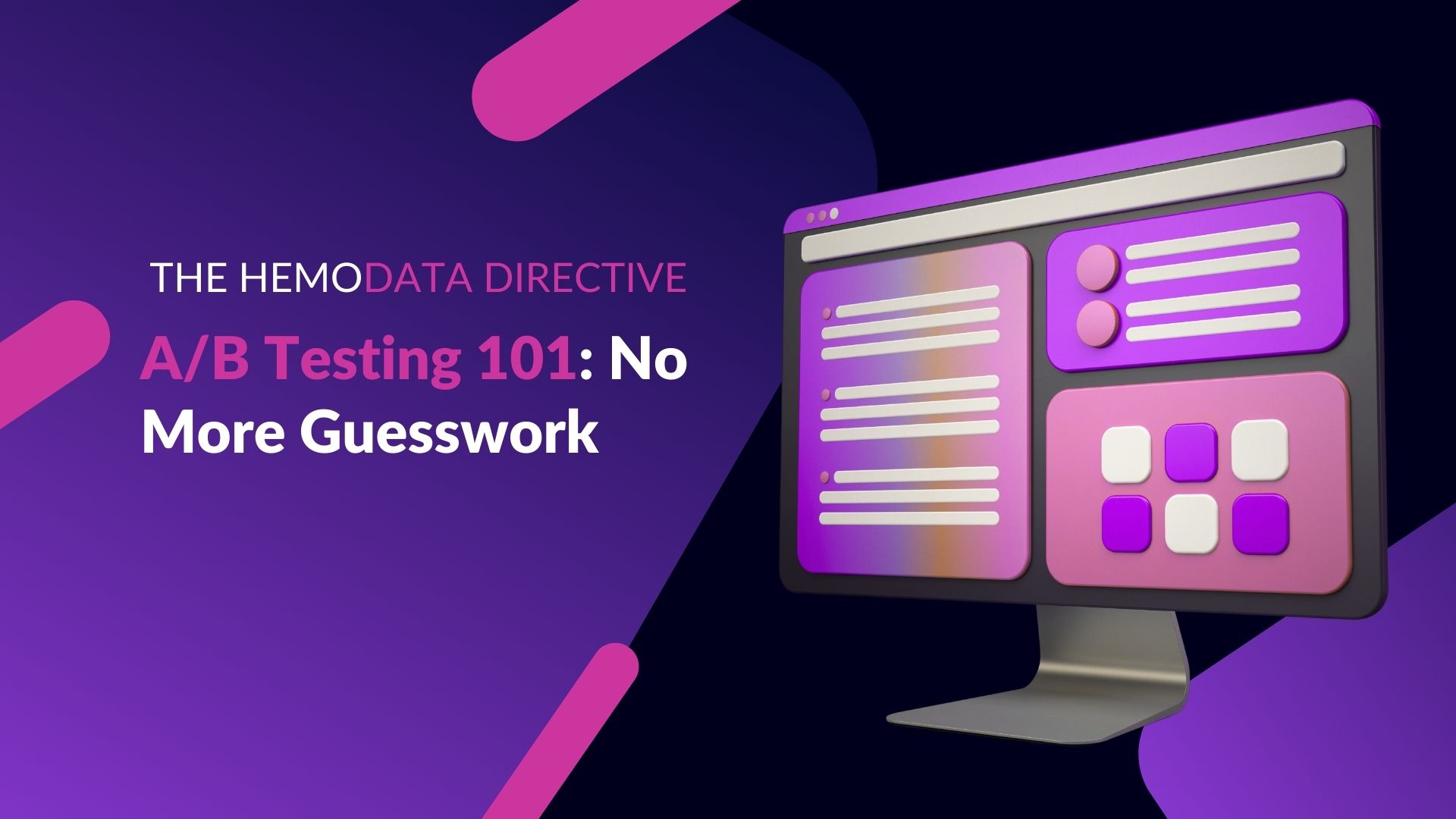Most businesses already know they should be “data-driven,” but when it comes to making changes, whether to a signup flow, an email subject line, or an onboarding experience, too many still rely on opinions or gut feel. The problem with gut feel? It’s often wrong.
A/B testing (also called split testing) gives you a framework to validate ideas with data. Think of it as the scientific method for business growth: form a hypothesis, run an experiment, and measure the results.
What Is A/B Testing?
At its simplest, A/B testing compares two or more versions of a variable (like a webpage, feature, or campaign) to see which one performs better.
Example:
- Version A (Control): A “Start Free Trial” button.
- Version B (Variant): A “Get Started Today” button.
By randomly splitting users between the two versions and tracking conversions, you identify which wording actually drives more sign-ups.
Key terms:
- Control – your original version.
- Variant – the new version you’re testing.
- Conversion – the desired action (e.g., clicks, purchases, sign-ups).
Why A/B Testing Matters
A/B testing is about removing guesswork from decision-making. Here are some of the ways in which it could help your team.
- Evidence Over Assumptions
Too often, decisions come down to the HiPPO (Highest Paid Person’s Opinion). But user behavior doesn’t always align with leadership’s instincts. With A/B testing, you replace “I think” with “we know.”
- Optimized Conversions
A single test that improves your conversion rate by 5% may feel small, but stack those gains month after month and you’ll see exponential impact. It’s like compound interest for your growth metrics. A tiny lift in click-through rate today snowballs into major gains in revenue tomorrow. Remember, the most successful teams move smarter, with consistency.
- Risk Reduction
Rolling out big changes without testing is like deploying untested code to production? Dangerous. A/B testing lets you try changes on a small percentage of users first. If it fails, the damage done is limited.
- Continuous Learning
Every test, whether it succeeds or fails, teaches you something new about your users. Over time, this builds a library of insights that inform future product and marketing strategy.
Think of each A/B test as a puzzle piece. One test won’t reveal the full picture, but over time, you assemble a clear image of what truly drives user engagement.
Who Should Use A/B Testing?
Nearly every function can apply experimentation:
- Product Teams – Validate UX flows, onboarding steps, or feature designs.
- Marketing Teams – Optimize subject lines, ads, landing pages.
- Growth Teams – Refine pricing models, referral incentives.
- Design Teams – Test readability, layouts, navigation.
- Support/Success Teams – Experiment with messaging in knowledge bases or in-app guides.
Let’s Walk Through an A/B Test Together
Let’s say you run a fintech app and want to improve sign-ups on your landing page. Right now, your main CTA button reads “Free Trial.” You suspect changing it to “Get Started” might encourage more users to convert. Here’s how you’d structure the experiment:
1. Define a Hypothesis
- Hypothesis: “Changing CTA text from ‘Free Trial’ to ‘Get Started’ will increase sign-ups by 10%.”
- Why this matters: Good hypotheses are specific and measurable.
2. Select a Metric
- Choose your North Star metric for success. In this case:
- Primary metric: Sign-up conversion rate (form completions ÷ unique visitors).
- Secondary metrics: Click-through rate on the CTA, average session time (to ensure the change doesn’t reduce engagement).
- Pro tip: Always lock your metrics before you start.
3. Segment Users Randomly
- Randomly split your visitors:
- Variant A (Control): CTA says “Free Trial.”
- Variant B (Test): CTA says “Get Started.”
- Ensure even distribution so personal biases, geography, or device types don’t skew results.
4. Run Until Statistically Significant
- Resist the urge to stop when you see early spikes. That’s usually noise.
- Define your stopping rule upfront: e.g., 95% confidence level (p < 0.05) and minimum sample size of 5,000 visitors per variant.
- This ensures your result is real, not random fluctuation.
- Example: If after two weeks, Variant B (“Get Started”) consistently shows a 12% higher sign-up rate with statistical significance, you can confidently adopt it.
5. Document and Share Results
- Document what you learned.
- In this case: “Action-oriented CTAs perform better than benefit-framing in our funnel.”
- Share insights across teams:
- Marketing can apply “Get Started” style CTAs in campaigns.
- Product can adopt action verbs in onboarding.
The Big Picture: This isn’t just about button text. Each experiment builds your knowledge base of what users respond to, turning your org into a learning machine.
In a nutshell: Show hypothesis → experiment → measurement → decision
Common Mistakes That Kill A/B Tests
- Testing too many variables at once
- Stopping too early due to short-term fluctuations
- Ignoring sample size – Too few users = unreliable results.
- Not defining your KPIs upfront
- Running tests randomly, with no hypotheses
Tools That Make A/B Testing Easier
Running A/B tests is one thing. Running them at scale, with reliable data, clear insights, and minimal disruption, is another. The right tools (that fight into your overall strategy) can make all the difference:
Kameleoon
Kameleoon is an AI-powered experimentation and personalization platform. It allows you to run A/B and multivariate tests while also delivering individualized experiences in real time. This makes it ideal for teams who want to combine experimentation with personalization, especially in customer-facing industries like e-commerce and media.
A/B Tasty
A/B Tasty focuses on rapid experimentation and CRO (Conversion Rate Optimization). It offers a user-friendly interface for marketers and product teams to launch and manage tests without heavy developer involvement. With built-in personalization, segmentation, and widgets, it’s especially useful for businesses looking to improve engagement quickly. We’ll cover a bit more about CRO in our other blogs, so keep an eye out!
Mixpanel
Mixpanel brings a data-first approach to experimentation. With Experimentation Reporting 2.0, you can measure test outcomes against the same behavioral and business metrics you already track, conversion, retention, CLTV, or custom KPIs. The advantage here is depth: Mixpanel ties A/B test results directly back to user behavior flows, helping teams understand not just what worked, but why.
What “Good” Looks Like
- Every test has a hypothesis and success metric.
- Results are reviewed across teams, not just siloed.
- Experiments feed into a learning loop: win → scale, lose → learn, then test again.
- Culture shifts from opinions to evidence.
A/B testing is a discipline that helps teams de-risk decisions, increase conversions, and learn faster. Done right, it turns experimentation into a competitive advantage.
The real takeaway? Stop guessing. Start testing.
Ready to embed experimentation in your workflow? Talk to us about how HEMOdata can help your teams set up scalable A/B testing frameworks.




